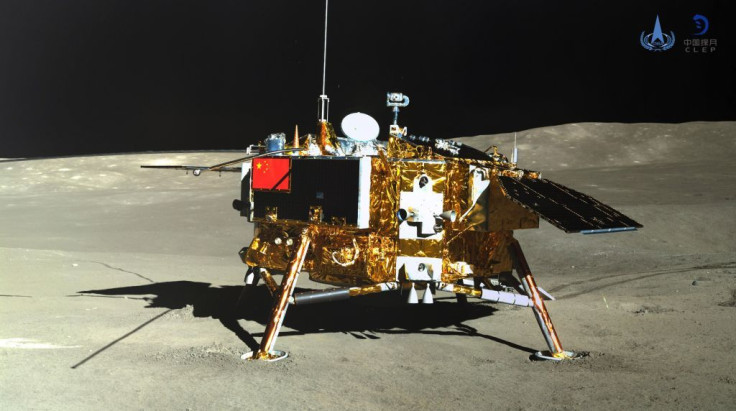China's Chang'e Probe Discovers What's Underneath The Far Side Of The Moon

KEY POINTS
- China's Chang'e-4 was the first spacecraft to safely land on the far side of the Moon
- Radar images of the Moon's subsurface shows three different layers underneath
- The layers were likely created during the turbulent early years of the galaxy
On Jan. 3, 2019, China ’s Chang’e-4 became the first spacecraft to safely land on the far side of the Moon and, just 12 hours after it landed, the Yutu-2 rover equipped with a Lunar Penetrating Radar (LPR) was successfully deployed.
In a new study, researchers from China and Italy give us the first details of what’s lurking underneath the surface of the far side of the Moon using the LPR on Yutu-2. To investigate what was under the ground, the team sent radio signals into the surface, reaching a depth of 40 meters below.
Evidently, the subsurface of the far side of the Moon is composed of highly porous materials with different sized boulders. Specifically, the radar showed three distinct layers underneath the surface: the topmost composed of a fine, loose layer of rocks that extend up to 12 meters below, the second layer composed of bigger boulders and rocks then, the third layer, which begins at about 24 meters, composed of alternating layers of coarse and fine materials.
According to the researchers, it is possible that the subsurface layers were created during the turbulent early years of the galaxy when meteors and other debris constantly struck the Moon, thereby forcing the material to get ejected from the surface then settle back again. In time, this led to the creation of distinct layers with varying distributions of rocks and soil.
“The results illustrate, in an unprecedented way, the spatial distribution of the different products that contribute to from the ejecta sequence and their geometrical characteristics,” study co-author Li Chunlai of the National Astronomical Observatories of the Chinese Academy of Sciences said. “This work shows the extensive use of the LPR could greatly improve our understanding of the history of lunar impact and volcanism and could shed new light on the comprehension of the geological evolution of the Moon's far side.”
Interestingly, China’s previous probe, Chang'e-3, also had a similar LPR but it was not able to reach the depths that Yutu-2 did. In fact, the depth that the researchers reached was three times the depth that Chang’e-3 reached. Only recently, Yutu-2 also came across some strange looking rocks that looked very different from the other lunar rocks.
For China’s next step in lunar exploration, Chang’e-5 is planned for launch later this year and, the plan is for a lander to retrieve soil samples then send them back to Earth for analysis.
The study describing the subsurface of the far side of the Moon is published in the journal Science.
© Copyright IBTimes 2025. All rights reserved.






















